In praise of vintage shopping bags
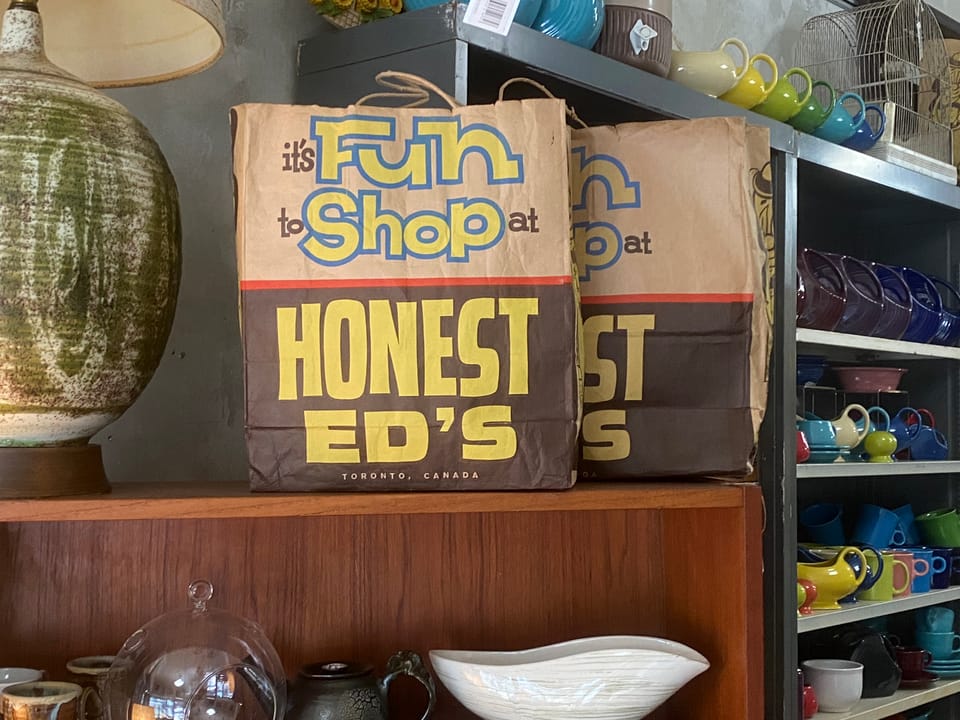
The weekly micro-decorating newsletter * Issue 9 of 13, A25 * Subscribe free *
Shopping bags are curious creatures. In one sense, they're purely functional objects, designed to get your purchases home safely. But in another, they're often signals that evoke entire worlds of aspiration and desire. The latter sense is especially evident when you come across a bag from an earlier era, whether hidden in the back of a closet or in the home of a relative.
Those thoughts tumbled through my mind a few years back, when I snapped the photo above at Williams Design, a vintage shop in the Junction. I couldn't believe these paper Honest Ed's bags, looking decades old based on their design and condition, had survived into the present. The cartoony lettering made me grin, instantly reminding me of that beloved bargain funhouse at Bloor and Bathurst that closed permanently in 2016.
When one of my brothers alerted me to an exhibition of vintage shopping bags at the Toronto Reference Library, it struck me as a savvy curatorial move, given how prevalent yet overlooked these items are in our lives. I toured the exhibition on Saturday, and I'm happy to report that it's a nostalgic roller coaster ride through Canada's retail history. The opening panel sets a lively mood that never lets up:
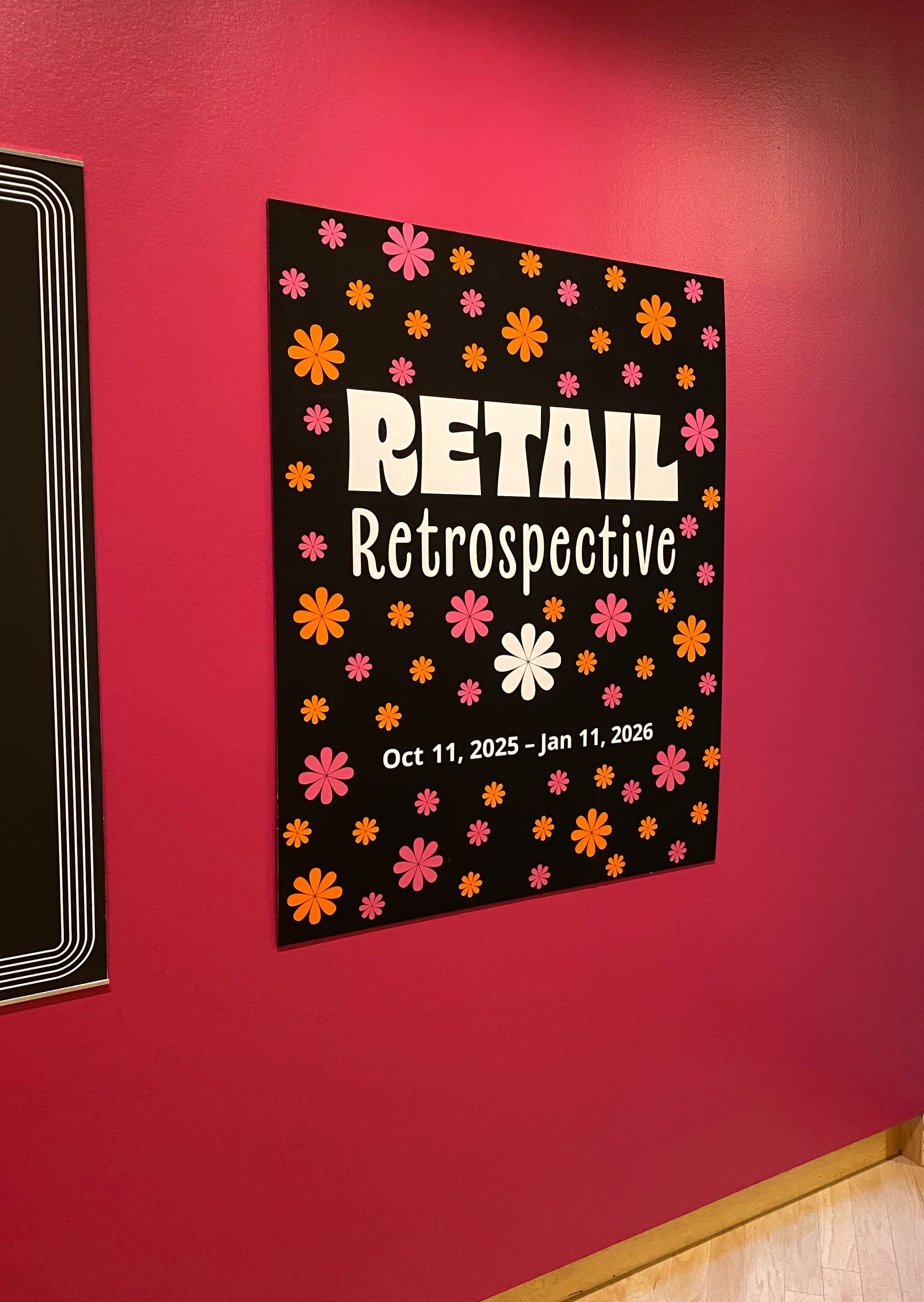
Sure enough, there are lots of eye-catching Honest Ed's bags, as well as some of their trademark hand painted signage:
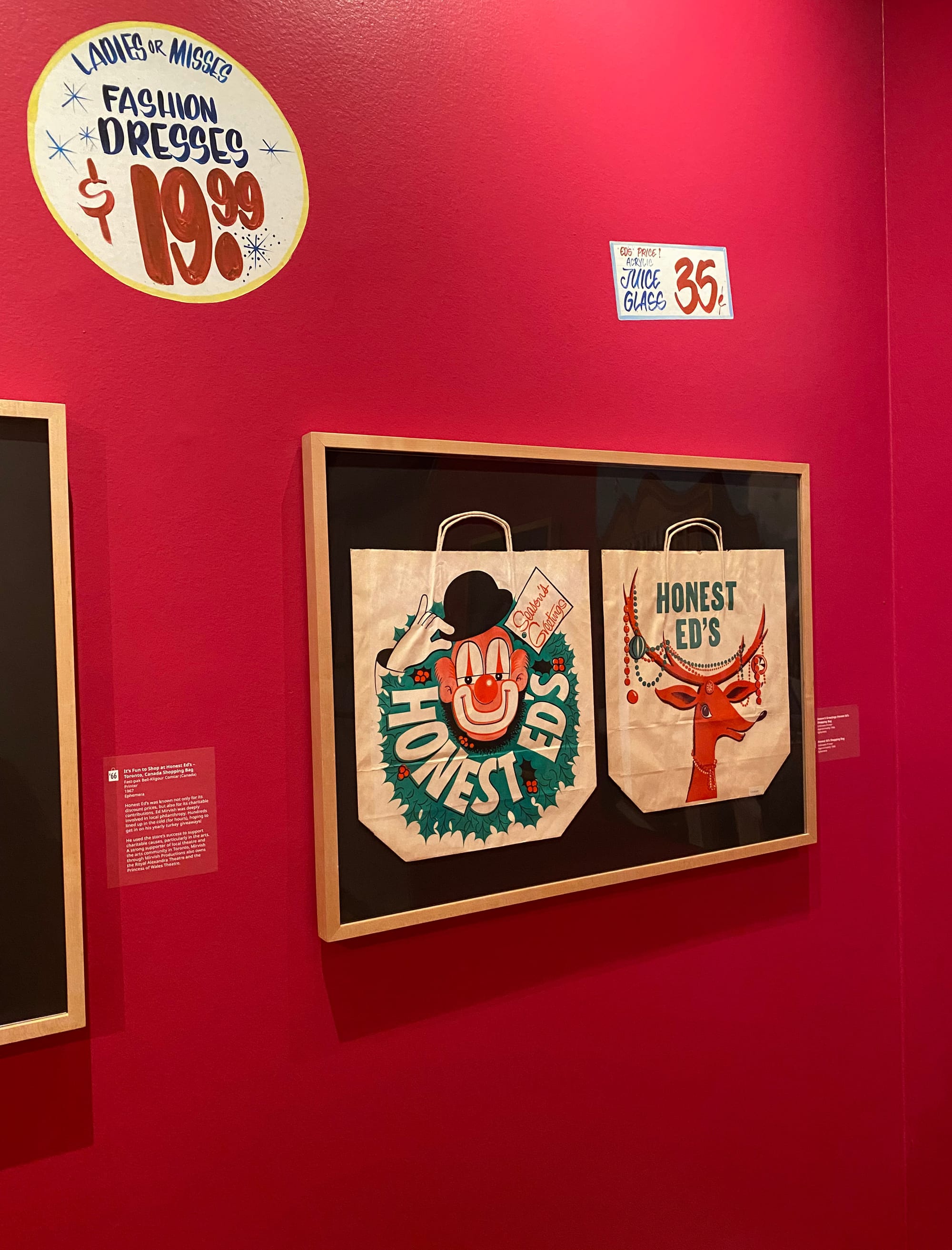

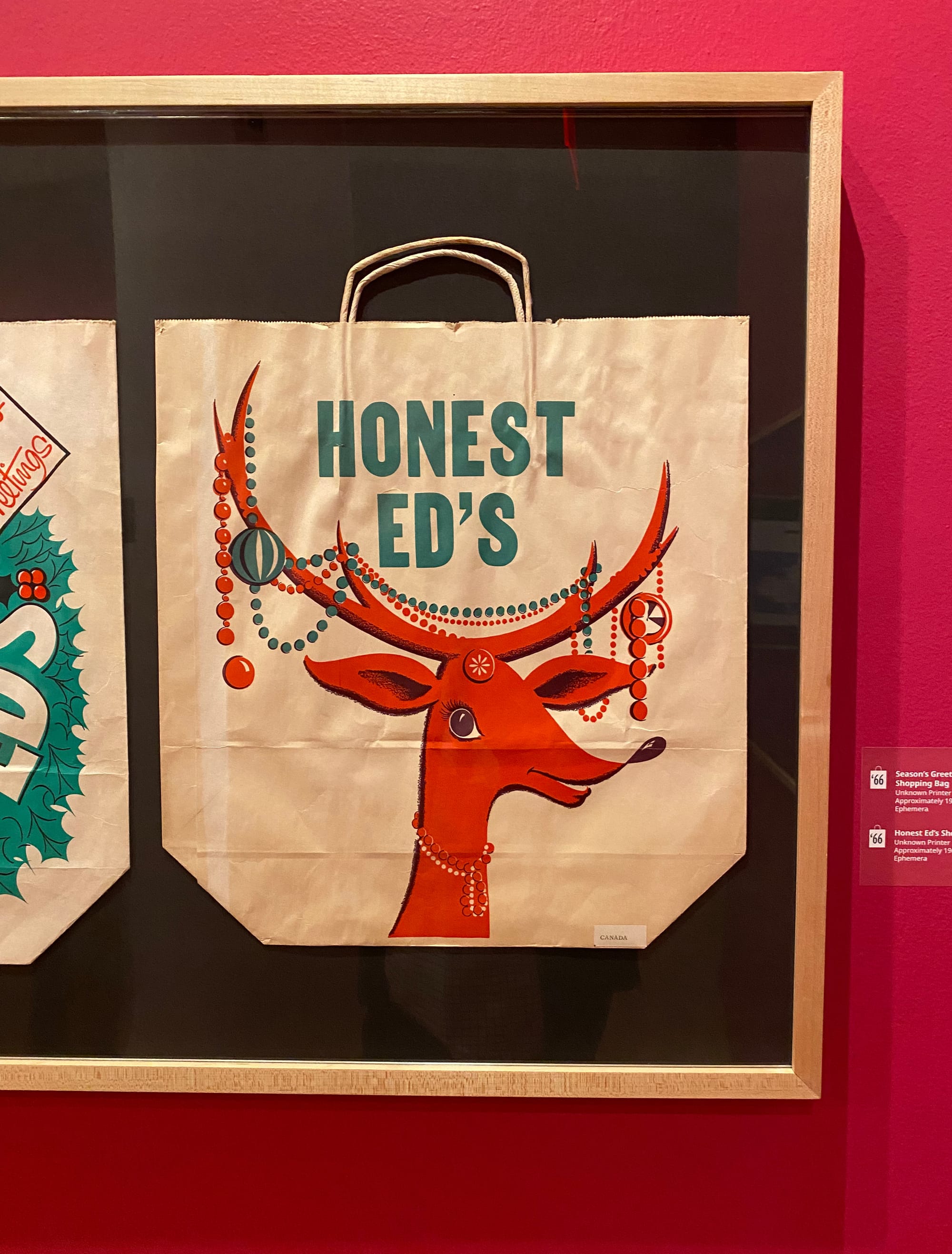
photos: Guy Koolhof
The big department stores are well-represented too. I was surprised at how the geometric grid of an Eaton's bag and the rippling lines of a Simpson's bag seemed to be uncanny windows into my childhood:
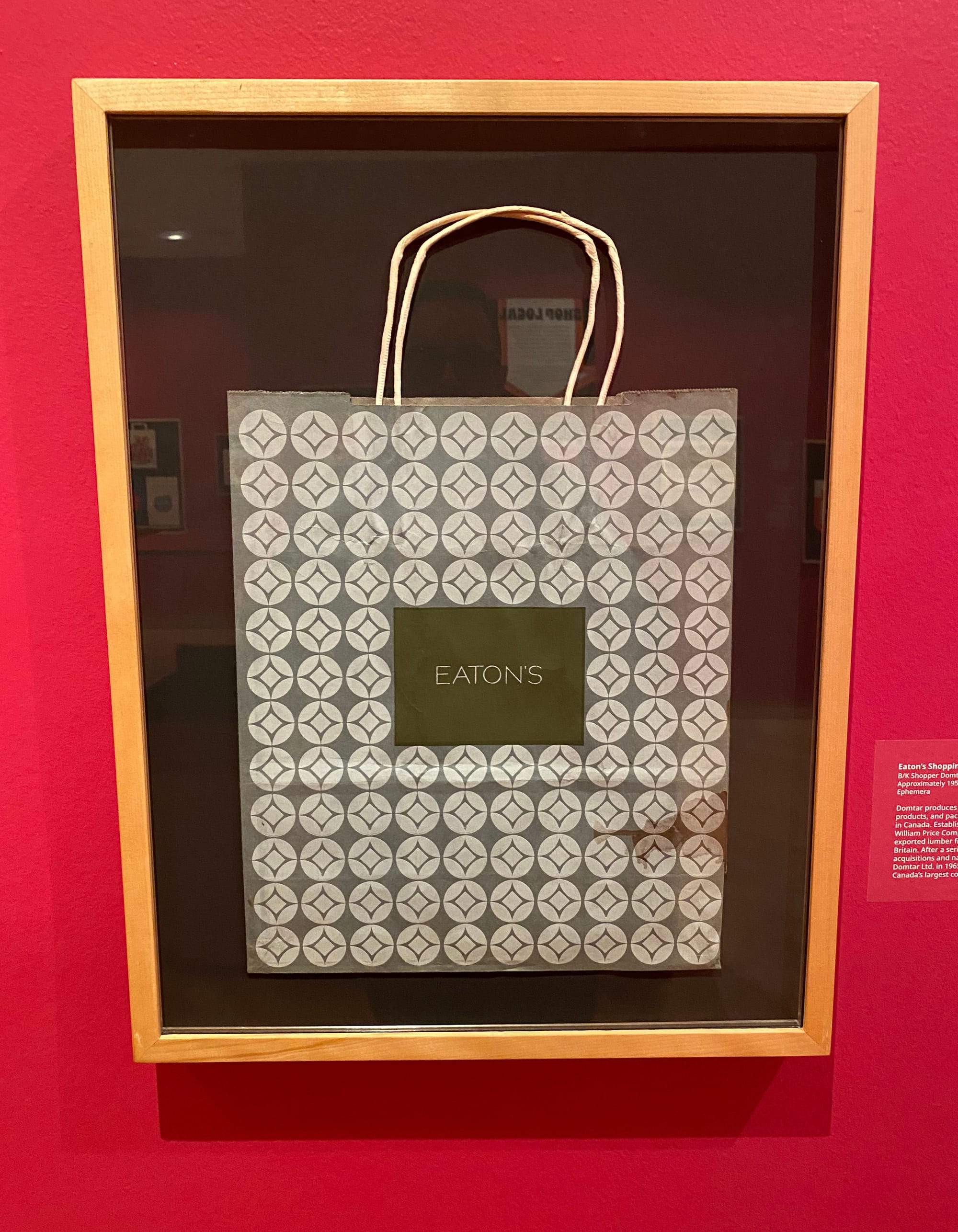
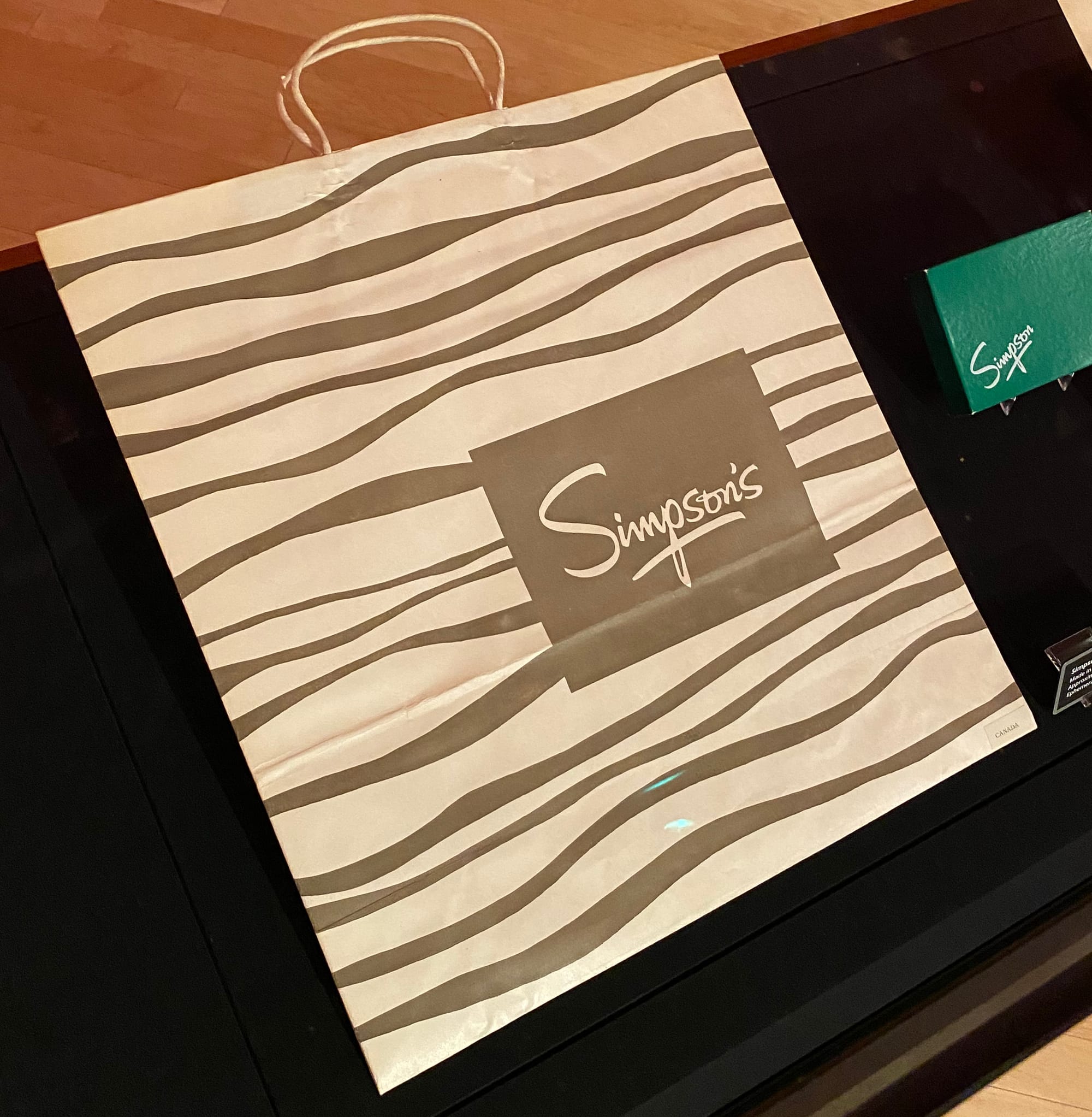
photos: Guy Koolhof
While these retail behemoths had their distinct, immediately recognizable looks, it was thrilling to see how they could push them in new directions. Check out this trippy Simpson's bag from 1964:
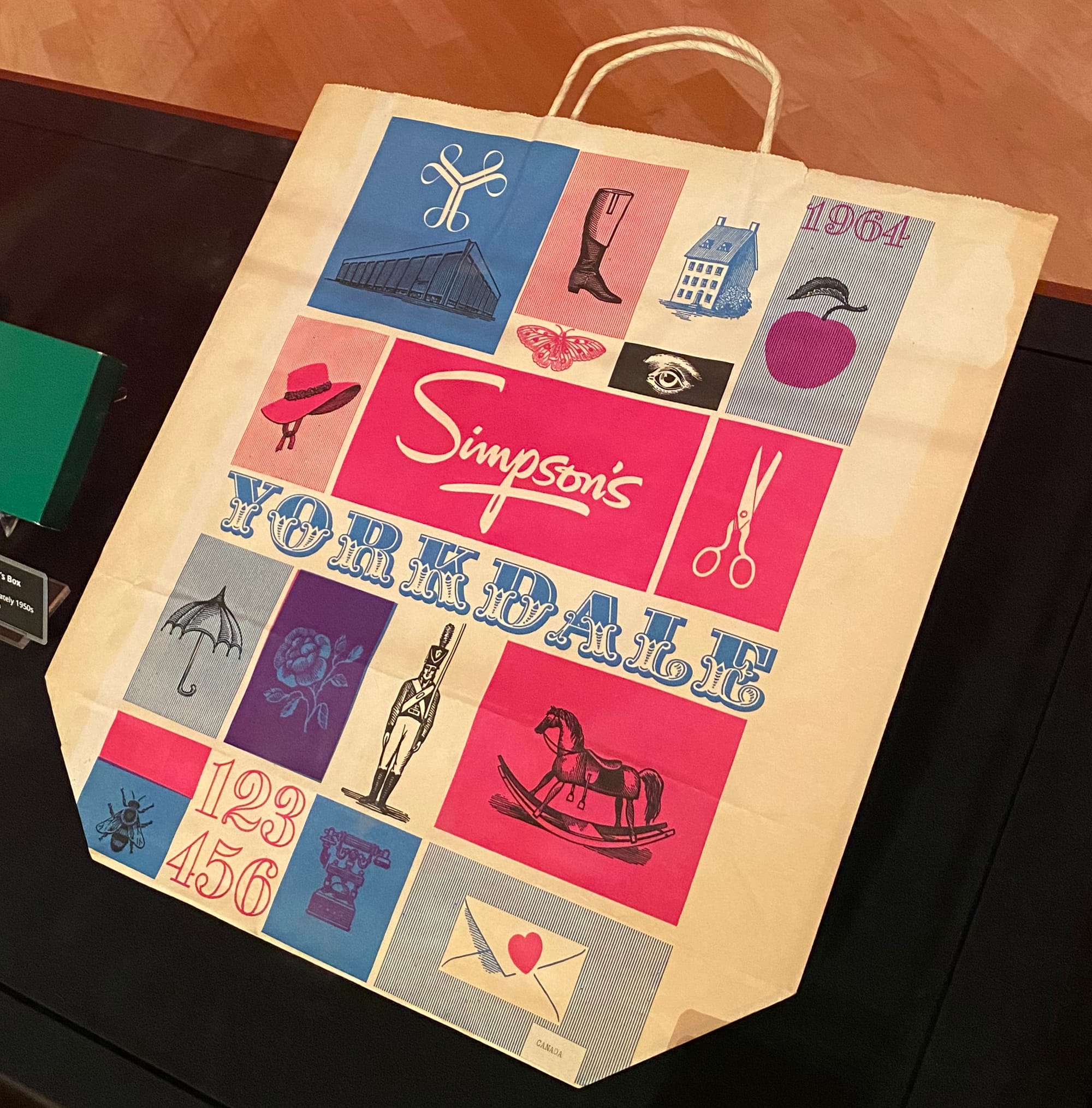
The simplest bag was perhaps the most moving, a small relic from the Albert Britnell Book Shop:

For eighty years, they did business just south of the Reference Library, closing in 1999. I passed by the empty facade on the way to the exhibition – a Starbucks for some years, and now vacant – its oxidized copper letters still marking the spot.
Almost as compelling were bags of shops I'd never heard of, but whose graphics spoke of a different time and place:
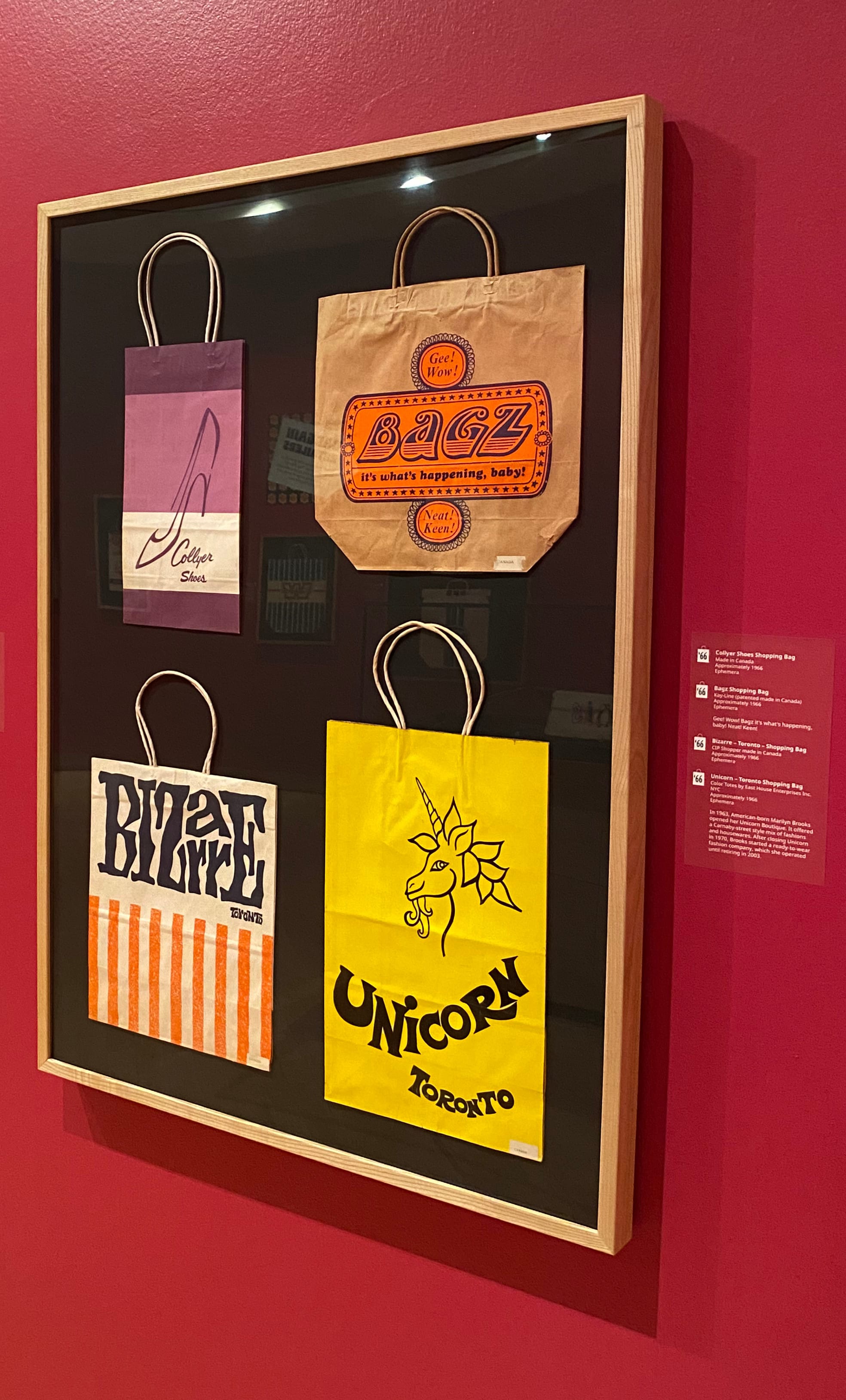
My favourite in the entire show was for a shop selling – fittingly enough – bags:

The five exclamations feel genuine, outbursts from a less jaded period.
A pairing of Hudson's Bay bags suggested a trend of simplifying designs, a supergraphics-style expression from the Seventies next to a more restrained number from the Nineties:
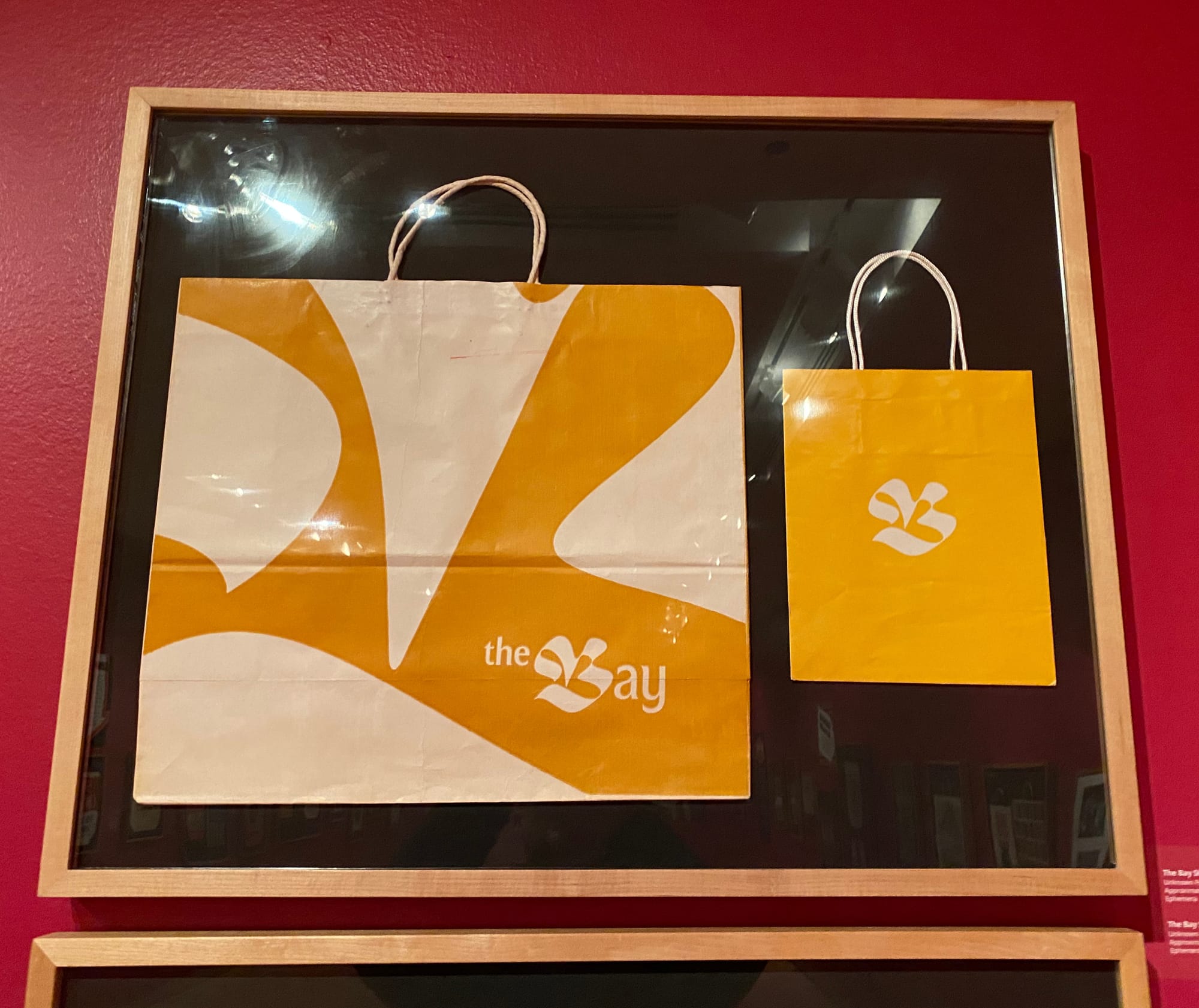
The show got me thinking about the shopping bags that currently populate my life. Here's a peek behind the sales counter at my go-to spot for what to wear, Cos:

They may seem stark compared to shopping bags from decades ago, but there's a strong feeling behind the minimalism that comes to life in the shapes and textures of their garments.
The day before I saw the exhibition, I picked up an item at Atomic Design, one of my longtime sources for mid-century treasures, and after weathering a rainstorm on the way home the bag looked like this:
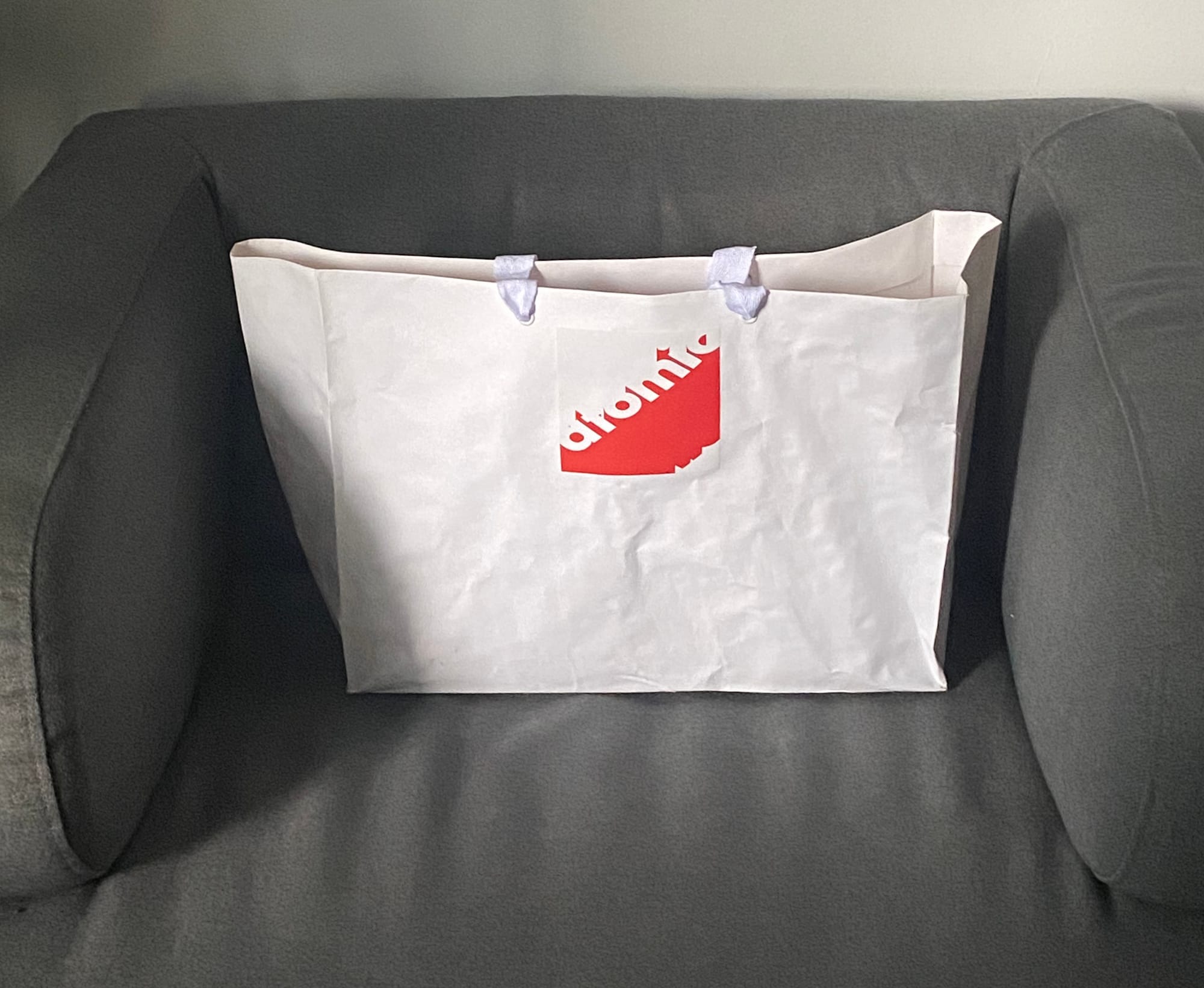
Some vintage shops are content with sending off their wares in generic paper bags, but Atomic's owner takes pride in the distinctive look of his packaging. Red tissue paper is an essential part of the mix.
There's a feeling you get when leaving a shop with a handsome bag holding a coveted item. It's as if the store is blowing you a kiss as you leave, a kiss that never really settles until you set the bag down in your entryway. If the bag lingers awhile, it's a temporary piece of decor.
Maybe this intimacy is why bags also lend themselves to patriotic expressions. Here's a Loblaws bag in the exhibition that celebrates our centennial:
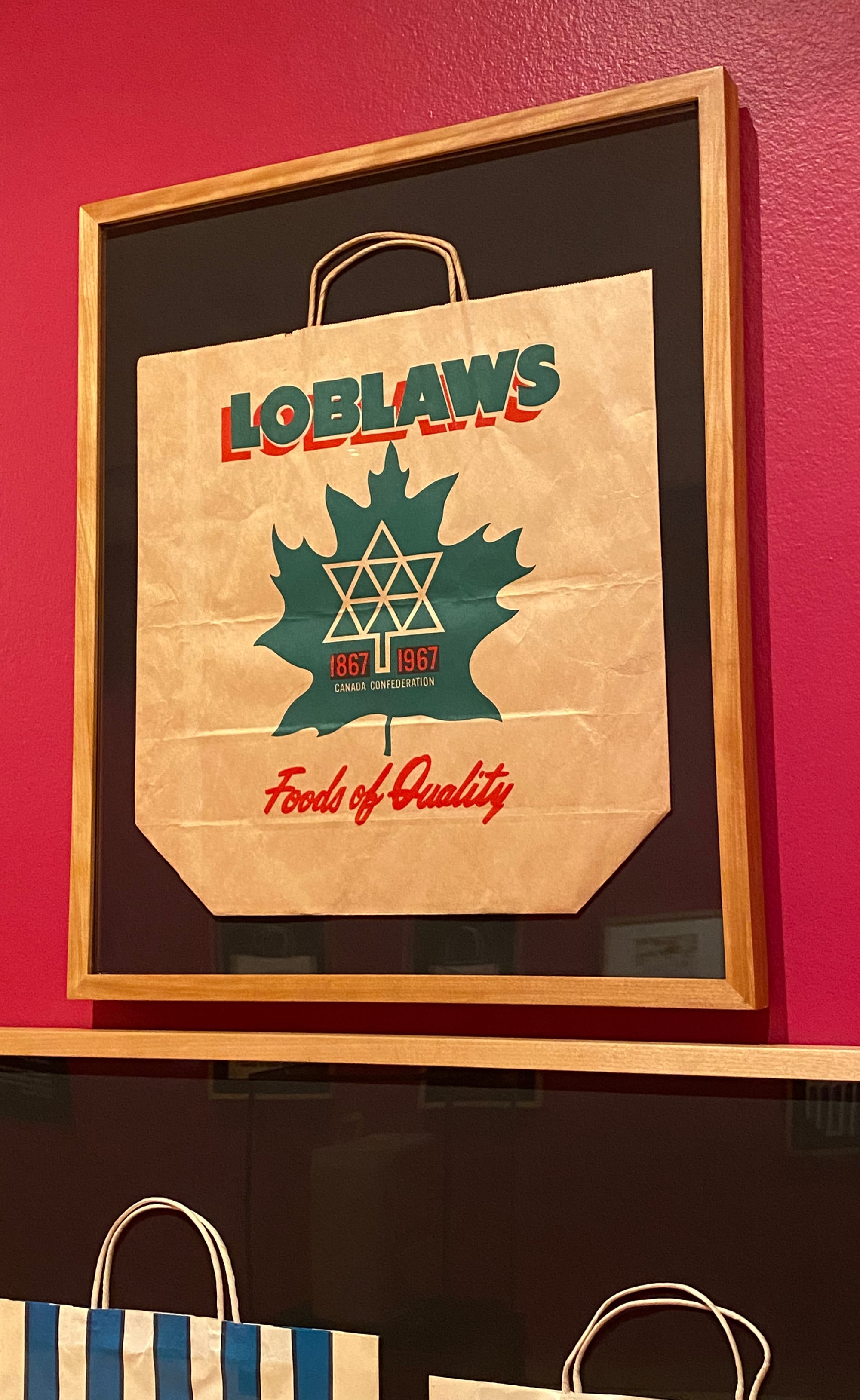
And here's a bag from the Sixties that feels like it could have been issued yesterday:
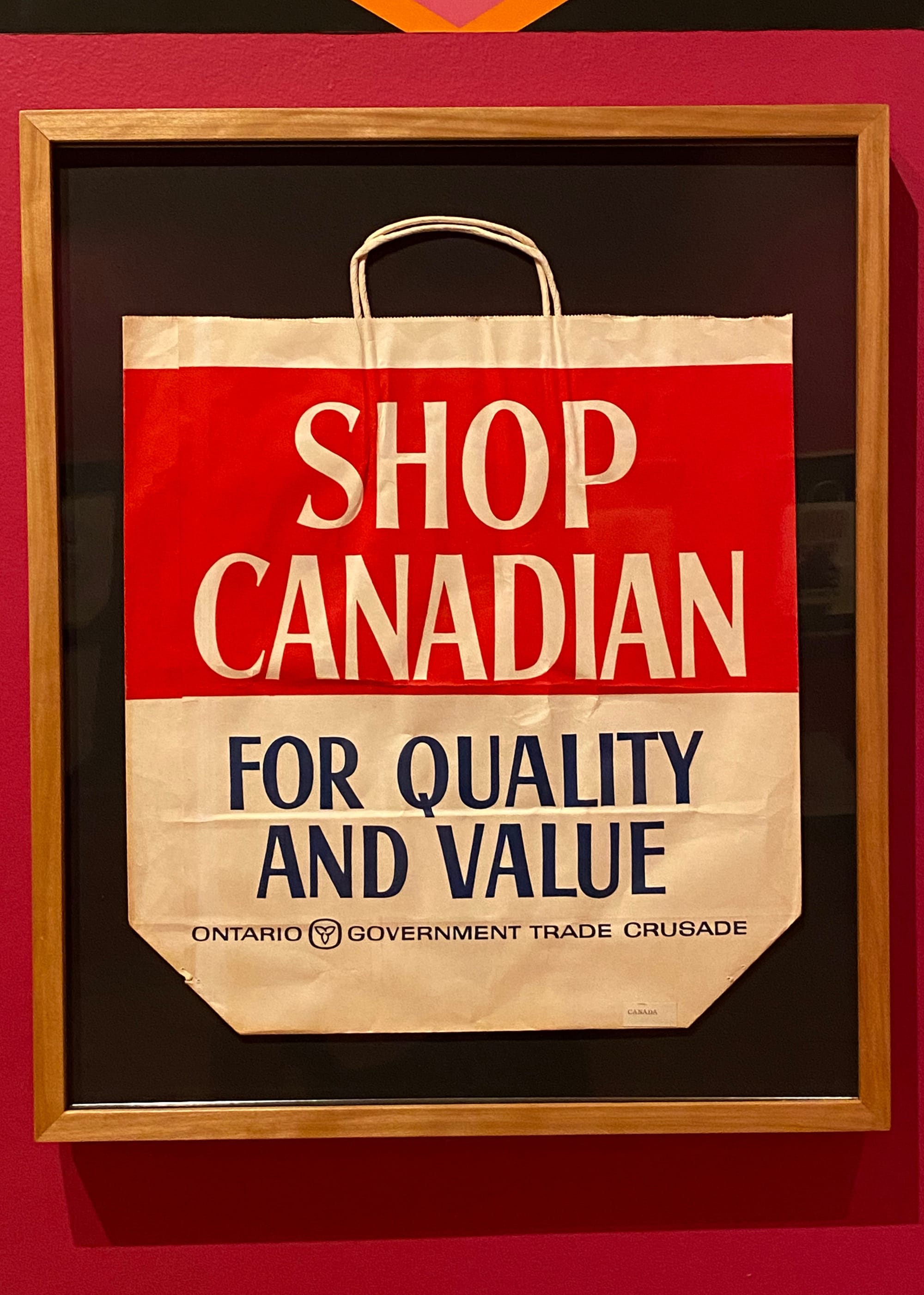
The exhibition is on until January 11 and would make a perfect detour from holiday shopping. It'll give you much to ponder: Will the bags you're carrying make it into a future retrospective? Even if not, they're something to briefly cherish.
From the archives
Why do remnants of the past have such a hold on us? Check out this back issue of guy with an eye for some speculations:

Thank you for reading.






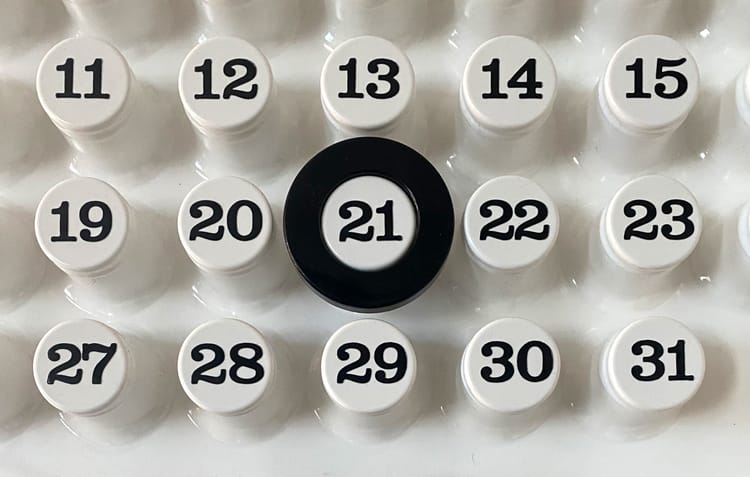

Member discussion